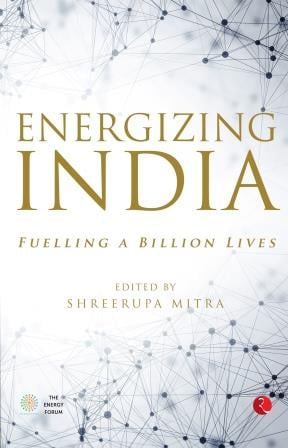Book Chapter
Household Energy Transition in India and Elsewhere: The Role of LPG
Abhishek Jain
February 2019 | Energy Transitions
Suggested Citation: Smith, Kirk R., Abhishek Jain. 2019. “Household Energy Transition in India and Elsewhere: The Role of LPG” In Energising India: Fuelling a Billion Lives, edited by Shreerupa Mitra, 48-72. New Delhi: Rupa.
Overview
This paper, published in Energising India: Fuelling a Billion Lives, discusses how gaseous fuels such as LPG can facilitate the clean energy transition at the household level in the short term. While the authors acknowledge that a suite of technologies needs to lead the household energy transition in the long term, the paper highlights the key lessons from the LPG programme in India and three other middle-income countries – Brazil, Indonesia and China.
In the Indian scenario, while part of the population has moved to modern sources of energy such as natural gas and electricity, others are stuck using traditional fuels such as biomass. This results in a double health risk from modern forms of air pollution such as coal-fired power plants as well as household air pollution, primarily in poor rural conditions. The conditions are similar in a number of other low and middle-income countries. The paper also tracks the different phases of the LPG programme in India.
Reasons for not using LPG for all cooking needs

Key Highlights
- Better targeting of subsidies for economically weaker sections of the population, accompanied by even greater reduction of subsidies among middle-class and well-to-households is important to fiscally sustain LPG programmes.
- Application of modern technology offers efficient and transparent ways to administer and target subsidies.
- Given the productivity and health benefits compared to use of traditional solid fuels, programmes can be termed ‘social investments’, which has a major difference in connotation compared to ‘subsidy’.
- Programmes with adequate targeting such as the Pradhan Mantri Ujjwala Yojana help reduce the disparity in access to clean fuels across different social and income groups.
- Cleaner household fuels have a strong role to play in cleaning up ambient air pollution in many countries, including India and China.
- In India, Brazil and Indonesia, semi-private oil companies have the operational scale needed to bring about change quickly and respond to national needs for such social programmes.
- Until households make a transition towards electricity-based cooking, support for clean fuel for cooking programmes is required to enable sustained use of such fuels to support health and productivity.
In the longer term, most household energy will probably be supplied by electricity, powered by non-carbon sources. In the shorter term, LPG can serve the role of an efficient, clean and low-carbon transition fuel in the medium in low and middle-income countries, moving away from the traditional biomass.








